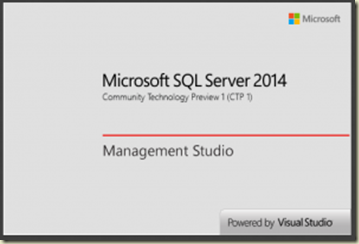Everybody says that they all have business intelligence applications. Everybody says that they develop business intelligence applications, including me  . But all BI applications are truly giving BI? What it provides? An indicator formed with a traffic light? A speedometer showing performance or actual of a KPI?
. But all BI applications are truly giving BI? What it provides? An indicator formed with a traffic light? A speedometer showing performance or actual of a KPI?

I have been designing and developing many modules related to business intelligence for years. Yes, we tried our best to convert data into information spending considerable, costly time with cleansing, validating, structuring formed/unformed data. I assumed that I had truly implemented BI. Although the success was seen with many cases, sometimes it ended up with just a centralized repository. A stranded repository, a stranded treasure. That is where I felt that I have lost in BI.
There can be many reasons for such unsatisfactory finale. I looked back, figured out few. They looked very simple but they have been ignored partially, sometime fully but not purposely. You may do it too, you may not, however, let me share them, you may consider them as precautional steps.
Neglect the champion (not purposely)
This is the most common mistake we always make. Being an IT guy with experience, I still think that I am not qualified enough for structuring the data warehouse in terms of business types or the domain. I am not talking about setting up ragged hierarchies, setting up slowly-changing dimensions or partitioning OLAP DW for real-time BI. This is all about structuring information for the domain, for the business, using their own business language. That you in deed need a business user, a champion. Once I faced for this;
“Dinesh, I see a discrepancy in financial figures, have you taken “control accounts” into consideration when calculating revised budgets for projects?”
That was something I was unaware. He started seeing inaccurate info in my BI solution and he lost the interest in my BI solution. This simply explains that no matter how hard you struggle to implement the solution, if business users see it as useless for them, you fail. The lesson I learnt from this was, never implement a BI solution without a champion.
Visualization is the key

Here are two quotes from two different business users;
“I like these graphical representations, I love this slicing-dicing feature that truly shows the insights”
“This dashboard makes me confused, too many gadgets, can I see the revenue of my companies in a simple manner?”
Many get attracted by interactive widgets but some do not. This is what we need to understand, this is what I realized. When you make a solution, make sure that right visualization is available regardless of the level of the business user because we cannot insist or force them to use what we have implemented without a proper business case. One could be looking for a simple scorecard that shows green-amber-red traffic lights, another could be looking for a trend-chart combined with what-if analysis. Requirements could be different from company to company, user to user but having a fully-fledge solution will allow you to win the heart of any sort of audience. Therefore, do not just design the data warehouse without thinking the visualization of the output and profiles of consumers.
Analysis cannot be performed
This is what I have witnessed with most BI solutions, they provide standard way of reporting, either production or analytical, or some dashboards. It can be a set of reports that have static columns with collapse and expand feature. It can be a dashboard with pre-defined, in other word, static graphical widgets. What if user says that I cannot perform what I have been doing, here is an example, I was questioned;
“Why can’t I add sales and distributor vehicle unavailability in to same chart and do a comparison? I have been doing it manually with Excel.”
The information on vehicle unavailability was not programmatically maintained, it was a manual, irregular recording which was performed on demand. But he has been doing it with his own Excel sheet. Yes, we can argue that information is not electronically available, hence it cannot be fulfilled with current BI solution but what if I simply allow him to upload his manual work and combine them with facts in DW supporting his analysis? If I had known all sort of analysis performed by business users, I would have made sure that everything was covered, at leaset with workarounds.
Though there are more, I think these three are the keys for failing BI solutions, making DW/BI solutions handicapped. If your solution is being built, make sure they have been considered.


